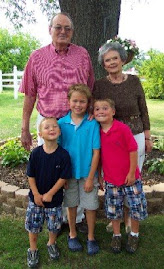Schoolfield is a cotton mill town that was built to house the thousands of employees that would be necessary to run the thousands of looms, carding machines and others needed to make cotton cloth. These houses were built in the late 1890s and/or the early 1900s. I am not sure exactly when but know it was a well built community and the structures would last several lifetimes.
It is said that Dan River’s first choice was Milton N. C. for the mill and housing construction. It was voted down, however, by the Milton town council due to the noise factor that would emanate from the thousands of machines necessary to the manufacturing process. At that time, Milton had approximately 500 residents. Today, they probably have less than a thousand. Just think, without that town council vote, Danville could very well be the size of Milton and Milton the size of Danville. I was informed recently by a Milton resident that the town council has not changed; they still will not permit any industry that makes noise.
The mill houses were built to provide low cost living quarters for the many farmers and mountain people the company needed to attract and lure to the city if they were to be successful in running a profitable enterprise for their many stock holders. This was an excellent plan and that is the reason my parents and many others came to live in Schoolfield.
The houses were segregated according to ones qualifications and the responsibilities one would assume. Example: If you had no experience and would come in as a trainee, you would be housed most likely on Pelham, Lee. Jackson, Stuart or Harrison Streets. These consisted of two to six-room houses and dependant on the size of a particular family would determine which house on which street a family would be quartered. On the other hand, should someone qualify for supervisory status, then that family would be housed, probably on Bishop or Park Avenue. Then there was the “Upper Crust”, they would be housed in much more luxurious quarters, more than likely not in the Mill Village.
I feel that is an adequate description of the housing accommodations and will go into more detail regarding other aspects further in this writing.
I am including here several photos of Dan River Mills as well as other properties owned by them and built for the exclusive use of their employees. Our entire family as well as all our friends took full advantage of these entities.
 Dan River Mills Number One Gate. This entrance to the Dan River Schoolfield Division was the most used. It was one of six entrances to
Dan River Mills Number One Gate. This entrance to the Dan River Schoolfield Division was the most used. It was one of six entrances tothis Division.

Main plant of Riverside division located on the Dan River in downtown Danville.

Pictured here is one of the groups of stores provided. This section includes Schoolfield Lunch, the Dan River outlet store and others. It once included a drug store, hardware store, barbershop, shoe shop and grocery store as well as others.

 Pictured here is what was once the Y. M. C. A. and Schoolfield Theatre. My entire family used these on a regular basis.
Pictured here is what was once the Y. M. C. A. and Schoolfield Theatre. My entire family used these on a regular basis.Pictured here is what was known as Hylton Hall. It was initially used as a housing facility for Dan River employees but was turned into offices sometime in the late 1940s or early 1950s.

No comments:
Post a Comment